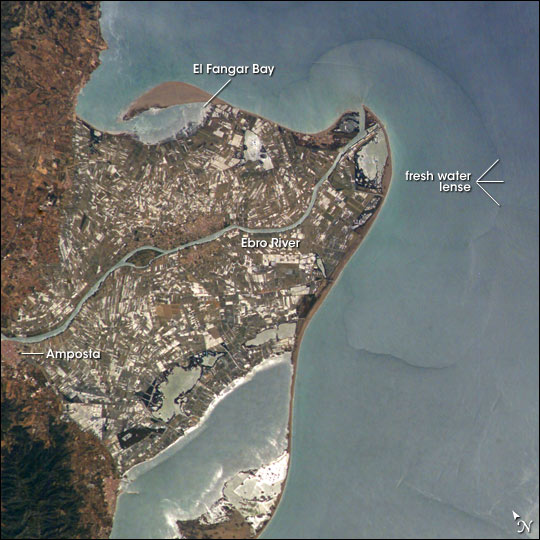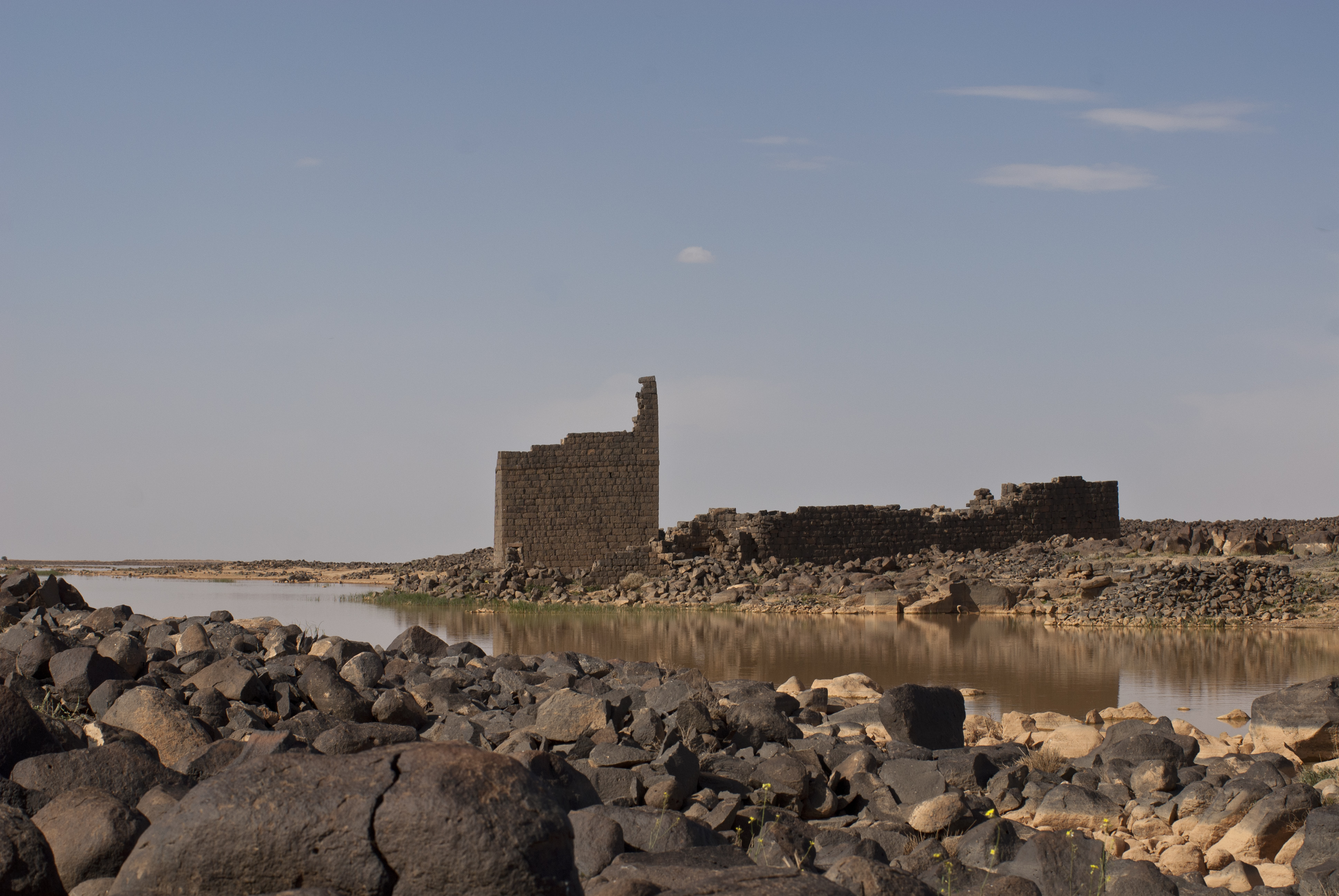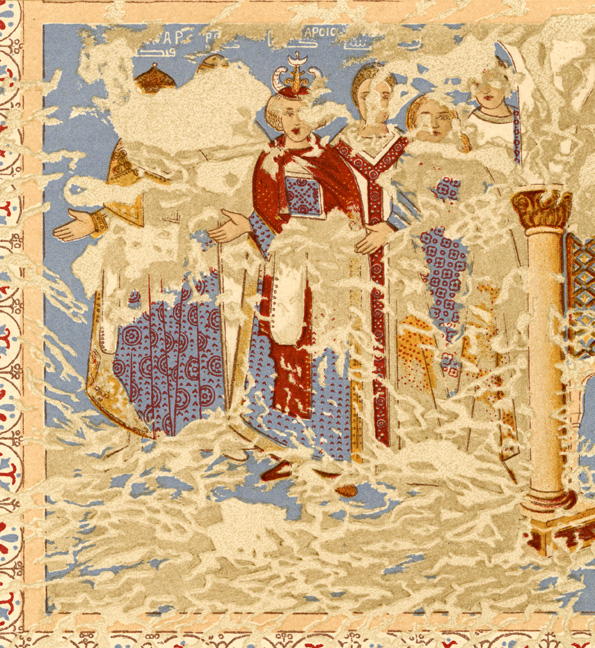|
Banu Qasi
The Banu Qasi, Banu Kasi, Beni Casi (, meaning "sons" or "heirs of Cassius"), Banu Musa, or al-Qasawi were a Muladí (local convert) dynasty that in the 9th century ruled the Upper March, a frontier territory of the Umayyad Emirate of Córdoba, located on the upper Ebro Valley. At their height in the 850s, family head Musa ibn Musa al-Qasawi was so powerful and autonomous that he would be called 'The Third Monarch of Hispania'. In the first half of the 10th century, an intra-family succession squabble, rebellions and rivalries with competing families, in the face of vigorous monarchs to the north and south, led to the sequential loss of all of their land. Dynastic beginnings The family is said to descend from the Hispano-Roman nobleman named Cassius. Muslim chronicles and the '' Chronicle of Alfonso III'' suggest he was a Visigoth. According to the 10th century Muwallad historian, Ibn al-Qūṭiyya, Count Cassius converted to Islam in 714 as the '' mawlā'' (client) of the Um ... [...More Info...] [...Related Items...] OR: [Wikipedia] [Google] [Baidu] |
Spain
Spain, or the Kingdom of Spain, is a country in Southern Europe, Southern and Western Europe with territories in North Africa. Featuring the Punta de Tarifa, southernmost point of continental Europe, it is the largest country in Southern Europe and the fourth-most populous European Union member state. Spanning across the majority of the Iberian Peninsula, its territory also includes the Canary Islands, in the Eastern Atlantic Ocean, the Balearic Islands, in the Western Mediterranean Sea, and the Autonomous communities of Spain#Autonomous cities, autonomous cities of Ceuta and Melilla, in mainland Africa. Peninsular Spain is bordered to the north by France, Andorra, and the Bay of Biscay; to the east and south by the Mediterranean Sea and Gibraltar; and to the west by Portugal and the Atlantic Ocean. Spain's capital and List of largest cities in Spain, largest city is Madrid, and other major List of metropolitan areas in Spain, urban areas include Barcelona, Valencia, Seville, ... [...More Info...] [...Related Items...] OR: [Wikipedia] [Google] [Baidu] |
Ebro
The Ebro (Spanish and Basque ; , , ) is a river of the north and northeast of the Iberian Peninsula, in Spain. It rises in Cantabria and flows , almost entirely in an east-southeast direction. It flows into the Mediterranean Sea, forming a delta in the Terres de l'Ebre region, in southern Catalonia. In the Iberian peninsula, it ranks second in length after the Tagus and second in discharge volume, and drainage basin, after the Douro. It is the longest river entirely within Spain; the other two mentioned flow into Portugal. The Ebro flows through many cities (): Reinosa in Cantabria; Frías and Miranda de Ebro in Castile and León; Haro, Logroño, Calahorra, and Alfaro in La Rioja; Tudela in Navarre; Alagón, Utebo, and Zaragoza in Aragon; and Flix, Móra d'Ebre, Benifallet, Tivenys, Xerta, Aldover, Tortosa, and Amposta in the province of Tarragona (Catalonia). Geography Upper part and tributaries The source of the river Ebro is in the Cantabrian Moun ... [...More Info...] [...Related Items...] OR: [Wikipedia] [Google] [Baidu] |
Kingdom Of Asturias
The Kingdom of Asturias was a kingdom in the Iberian Peninsula founded by the nobleman Pelagius who traditionally has been described as being of Visigothic stock. Modern research is leaning towards the view that Pelagius was of Hispano-Roman origins. The Kingdom of Asturias was the first Christian political entity to be established in the Iberian Peninsula after the Umayyad conquest of Visigothic Hispania in 711-718. In the Summer of 722,Amy G. Remensnyder, ''La Conquistadora: The Virgin Mary at War and Peace in the Old and New Worlds'', (Oxford University Press, 2014), 23. Pelagius defeated an Umayyad army at the Battle of Covadonga, in what is retroactively regarded as the beginning of the Christian ''Reconquista''. The Asturian kings would occasionally make peace with the Muslims, particularly at times when they needed to pursue their other enemies, mainly rebel Basques and Galicians. Thus Fruela I (757–768) fought Muslims but also defeated the Basques and Galicians, ... [...More Info...] [...Related Items...] OR: [Wikipedia] [Google] [Baidu] |
Logroño
Logroño ( , , ) is the capital of the autonomous community of La Rioja (Spain), La Rioja, Spain. Located in the north of the Iberian Peninsula, primarily in the right (South) bank of the Ebro River, Logroño has historically been a place of passage, such as the Camino de Santiago. Its borders were disputed between the Iberian kingdoms of Crown of Castile, Castille, Kingdom of Navarre, Navarre and Crown of Aragon, Aragon during the Middle Ages. The population of the city in 2021 was 150,808 while the metropolitan area included nearly 200,000 inhabitants. The city is a centre of trade of Rioja wine, for which the area is noted, and manufacturing of wood, metal and textile products. Etymology Origin of the name The origin of this toponym is, as for many other places, unknown. The name ''Lucronio'' was first used in a document from 965 where García Sánchez I of Pamplona donated the place so named to the Monasteries of San Millán de la Cogolla, Monastery of San Millán. In ... [...More Info...] [...Related Items...] OR: [Wikipedia] [Google] [Baidu] |
Al-Walid I
Al-Walid ibn Abd al-Malik ibn Marwan (; – 23 February 715), commonly known as al-Walid I (), was the sixth Umayyad caliph, ruling from October 705 until his death in 715. He was the eldest son of his predecessor, Caliph Abd al-Malik (). As a prince, he led annual raids against the Byzantines from 695 to 698 and built or restored fortifications along the Syrian Desert route to Mecca. He became heir apparent in , after the death of the designated successor, Abd al-Malik's brother Abd al-Aziz ibn Marwan. Under al-Walid, his father's efforts to centralize government, impose a more Arabic and Islamic character on the state, and expand its borders were continued. He heavily depended on al-Hajjaj ibn Yusuf, his father's powerful viceroy over the eastern half of the caliphate. During his reign, armies commissioned by al-Hajjaj conquered Sind and Transoxiana in the east, while the troops of Musa ibn Nusayr, the governor of Ifriqiya, conquered the Maghreb and Hispania in the w ... [...More Info...] [...Related Items...] OR: [Wikipedia] [Google] [Baidu] |
Caliph
A caliphate ( ) is an institution or public office under the leadership of an Islamic steward with Khalifa, the title of caliph (; , ), a person considered a political–religious successor to the Islamic prophet Muhammad and a leader of the entire Muslim world (''ummah''). Historically, the caliphates were polities based on Islam which developed into multi-ethnic trans-national empires. During the medieval period, three major caliphates succeeded each other: the Rashidun Caliphate (632–661), the Umayyad Caliphate (661–750), and the Abbasid Caliphate (750–1517). In the fourth major caliphate, the Ottoman Caliphate, the rulers of the Ottoman Empire claimed caliphal authority from 1517 until the Ottoman caliphate was Abolition of the Caliphate, formally abolished as part of the Atatürk's reforms, 1924 secularisation of Turkey. An attempt to preserve the title was tried, with the Sharifian Caliphate, but this caliphate fell quickly after its conquest by the Sultanate o ... [...More Info...] [...Related Items...] OR: [Wikipedia] [Google] [Baidu] |
Damascus
Damascus ( , ; ) is the capital and List of largest cities in the Levant region by population, largest city of Syria. It is the oldest capital in the world and, according to some, the fourth Holiest sites in Islam, holiest city in Islam. Known colloquially in Syria as () and dubbed, poetically, the "City of Jasmine" ( ), Damascus is a major cultural center of the Levant and the Arab world. Situated in southwestern Syria, Damascus is the center of a large metropolitan area. Nestled among the eastern foothills of the Anti-Lebanon mountain range inland from the eastern shore of the Mediterranean on a plateau above sea level, Damascus experiences an arid climate because of the rain shadow effect. The Barada, Barada River flows through Damascus. Damascus is one of the List of oldest continuously inhabited cities, oldest continuously inhabited cities in the world. First settled in the 3rd millennium BC, it was chosen as the capital of the Umayyad Caliphate from 661 to 750. Afte ... [...More Info...] [...Related Items...] OR: [Wikipedia] [Google] [Baidu] |
Umayyad Conquest Of Hispania
The Muslim conquest of the Iberian Peninsula (; 711–720s), also known as the Arab conquest of Spain, was the Umayyad Caliphate, Umayyad conquest of the Visigothic Kingdom, Visigothic Kingdom of Hispania in the early 8th century. The conquest resulted in the end of Christianity, Christian rule in most of Iberia and the establishment of Muslims, Muslim Arab world, Arab-Moors, Moorish rule in that territory, which came to be known as al-Andalus, under the Umayyad dynasty. During the caliphate of the sixth Umayyad caliph al-Walid I (), military commander Tariq ibn Ziyad departed from North Africa in early 711 to cross the Straits of Gibraltar, with a force of about 1,700 men, to launch a military expedition against the Visigothic Kingdom, Visigoth-controlled Kingdom of Toledo, Spain, Toledo, which encompassed the former territory of Roman Hispania. After defeating king Roderic at the Battle of Guadalete in July the same year, Tariq was reinforced by an Arabs, Arab force led by his s ... [...More Info...] [...Related Items...] OR: [Wikipedia] [Google] [Baidu] |
Umayyad Caliphate
The Umayyad Caliphate or Umayyad Empire (, ; ) was the second caliphate established after the death of the Islamic prophet Muhammad and was ruled by the Umayyad dynasty. Uthman ibn Affan, the third of the Rashidun caliphs, was also a member of the clan. The family established dynastic, hereditary rule with Mu'awiya I, the long-time governor of Bilad al-Sham, Greater Syria, who became caliph after the end of the First Fitna in 661. After Mu'awiya's death in 680, conflicts over the succession resulted in the Second Fitna, and power eventually fell to Marwan I, from another branch of the clan. Syria remained the Umayyads' main power base thereafter, with Damascus as their capital. The Umayyads continued the Early Muslim conquests, Muslim conquests, conquering Ifriqiya, Transoxiana, Sind (caliphal province), Sind, the Maghreb and Hispania (al-Andalus). At its greatest extent (661–750), the Umayyad Caliphate covered , making it one of the largest empires in history in terms of ar ... [...More Info...] [...Related Items...] OR: [Wikipedia] [Google] [Baidu] |
Mawla
''Mawlā'' (, plural ''mawālī'' ), is a polysemous Arabic word, whose meaning varied in different periods and contexts.A.J. Wensinck, Encyclopedia of Islam 2nd ed, Brill. "Mawlā", vol. 6, p. 874. Before the Islamic prophet Muhammad, the term applied to any form of tribal association. In the Quran and hadiths it is used in multiple senses, including 'lord', 'guardian', and 'trustee'. After Muhammad's death, the Umayyad dynasty accepted new converts to Islam into Arab-Muslim society and the word ''mawali'' gained currency as an appellation for converted non-Arab Muslims in the early Islamic caliphates. Etymology The word ''mawla'', which was used by the Islamic prophet Muhammad about Ali in the Ghadir Khumm speech, is derived from the root ''w-l-y'', meaning "to be close to" or "to have power over". ''Mawla'' can have reciprocal meanings, depending on whether it is used in the active or passive voice: "master" Originally, ''mawāli'' were clients of an Arab people, ... [...More Info...] [...Related Items...] OR: [Wikipedia] [Google] [Baidu] |
Ibn Al-Qūṭiyya
Ibn al-Qūṭiyya (, died 6 November 977), born Muḥammad Ibn ʿUmar Ibn ʿAbd al-ʿAzīz ibn ʾIbrāhīm ibn ʿIsā ibn Muzāḥim (), also known as Abu Bakr or al-Qurtubi ("the Córdoban"), was an Andalusian historian and considered the greatest philologist at the Umayyad court of caliph Al-Hakam II. His magnum opus, the ''History of the Conquest of al-Andalus'', is one of the earliest Arabic Muslim accounts of the Islamic conquest of Spain. Life Ibn al-Qūṭiyya, whose name means "son of the Gothic woman", claimed descent from Wittiza, the last king of the united Visigoths in Spain, through a granddaughter, Sara al-Qutiyya, who travelled to Damascus and married ʿĪsā ibn Muzāḥim, an Arab client of the 10th Umayyad caliph Hisham. Sara and ʿĪsā then returned to Al-Andalus. Ibn al-Qūṭiyya was born and raised in Seville. His family was under the patronage of the Qurayshi tribe, and his father was a qāḍī (judge) in Seville and Écija. The Banu Hajjaj, a ... [...More Info...] [...Related Items...] OR: [Wikipedia] [Google] [Baidu] |




